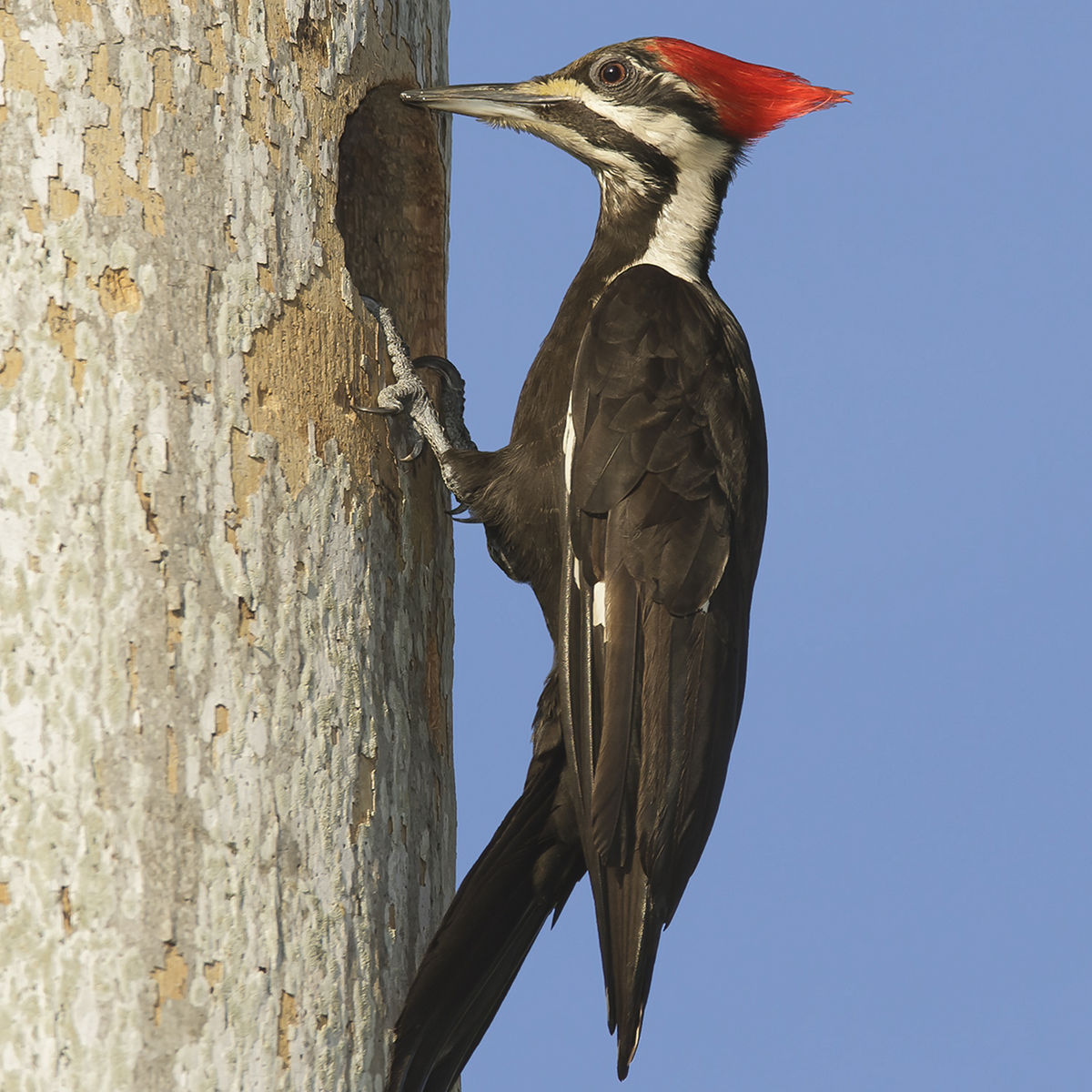Woodpeckers in Florida Populace: Variety Summary and Preservation
Woodpeckers in Florida Populace: Variety Summary and Preservation
Blog Article
Woodpeckers Unleashed: Discovering the Wonders of These Proficient Tree Mountain Climbers
Woodpeckers, with their distinct markings and rhythmic drumming resembling through wooded areas, hold an unique location in the bird world - Woodpeckers in Florida. As we dig right into the elaborate information of woodpeckers' nesting practices, feeding strategies, and the ongoing conservation initiatives to protect these exceptional birds, a much deeper gratitude for their location in nature unravels.
Anatomy and Adaptations
When analyzing the makeup and adaptations of woodpeckers, one can observe amazing functions that allow these birds to prosper in their specialized environmental specific niche. Additionally, woodpeckers have zygodactyl feet, with two toes facing onward and 2 dealing with backwards, offering a firm grip on tree trunks while they look for food or drum for interaction.
Moreover, woodpeckers have an unique tongue framework that is long, barbed, and sticky, allowing them to draw out insects from crevices in timber. This specific adaptation permits woodpeckers to make use of a food source that is inaccessible to several various other bird species. Overall, the makeup and adaptations of woodpeckers showcase the impressive transformative services that have actually enabled these birds to flourish in their arboreal environment.
Drumming Habits
Having actually explored the makeup and adaptations of woodpeckers, the emphasis now shifts to recognizing their drumming behavior, a distinct element of their interaction and territorial screens. Drumming is a vital type of communication amongst woodpeckers, serving several purposes such as developing territories, drawing in mates, and signaling alarm system. Each woodpecker species has a special drumming pattern that helps individuals identify members of their very own species and identify them from competitors or killers.
Woodpeckers produce drumming noises by swiftly pecking on resonant surface areas such as dead trees, energy poles, and even steel objects, developing a series of balanced beats. The intensity and speed of drumming can vary based on the purpose; for example, a rapid drumming sequence might indicate aggression in the direction of burglars, while a slower and softer drumming pattern could suggest courtship (Woodpeckers in Florida). In addition, woodpeckers may change the regularity and period of their drumming to convey certain messages properly
Nesting Habits
Checking out the nesting behaviors of woodpeckers reveals fascinating understandings right into their reproductive actions and environment choices. Woodpeckers are understood for their special nesting choices, frequently excavating tooth cavities in trees to develop protected rooms for raising their young. These cavities serve not only as a nesting site however likewise as a safe haven from killers and stormy climate.
Woodpeckers exhibit a high degree of fidelity to their nesting sites, usually going back to the very same location year after year. This behavior highlights the Check Out Your URL importance of suitable environment schedule for their reproductive success. The option of a nesting website is critical for woodpeckers, with variables such as tree varieties, elevation, and degeneration stage playing significant roles in their decision-making process.
Surprisingly, some woodpecker varieties are recognized to dig deep into several tooth cavities within their territory, providing themselves with different nesting alternatives. This approach might serve as a form of insurance versus possible risks or disturbances to their primary nesting website.

Feeding Techniques
Woodpeckers utilize a selection of specialized feeding strategies to obtain their key food sources. Among the most unique feeding habits of woodpeckers is drumming, which entails rapid pecking on trees to discover pests beneath the bark. This drumming not only aids them situate prey but likewise acts as a method of communication with other woodpeckers. Woodpeckers have strong, chisel-like beaks that enable them to pierce right into timber effortlessly. Once a hole is produced, they utilize their lengthy, barbed tongues to remove pests such as ants, beetles, larvae, and spiders. These tongues are coated with sticky saliva that helps trap the victim. Woodpeckers are likewise understood to dig deep into dental caries in trees to accessibility hidden insect larvae or sap. Some species, like the acorn woodpecker, store nuts in specifically produced holes called granaries. This calculated keeping discover this info here of food assists them make it through throughout food shortage durations. Woodpeckers are genuinely amazing in their feeding techniques, showcasing adaptability and intelligence in procuring their nourishment.
Conservation Initiatives
Among the complex feeding methods displayed by woodpeckers, the conservation initiatives targeted at protecting these fascinating birds play an essential role in maintaining their environments and populations. Woodpeckers face numerous dangers to their survival, including environment loss as a result of deforestation, climate read this adjustment altering their ecosystems, and crashes with manufactured structures such as buildings and vehicles - Woodpeckers in Florida. Conservationists are proactively functioning to deal with these obstacles and make sure the long-lasting health of woodpecker types

Education and learning and public understanding campaigns are also essential parts of woodpecker conservation efforts. By elevating awareness concerning the value of these birds in maintaining healthy and balanced woodland communities, conservationists can gather assistance for habitat preservation efforts and promote liable land management techniques. With collaborative initiatives between scientists, policymakers, and local areas, we can function together to protect a future where woodpeckers thrive in their all-natural habitats.
Verdict

Report this page